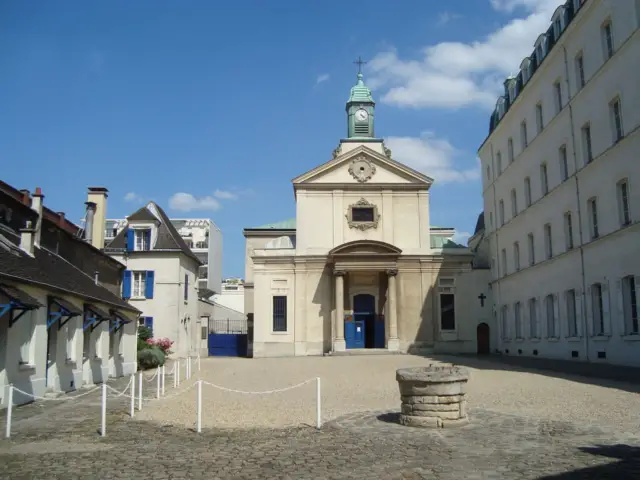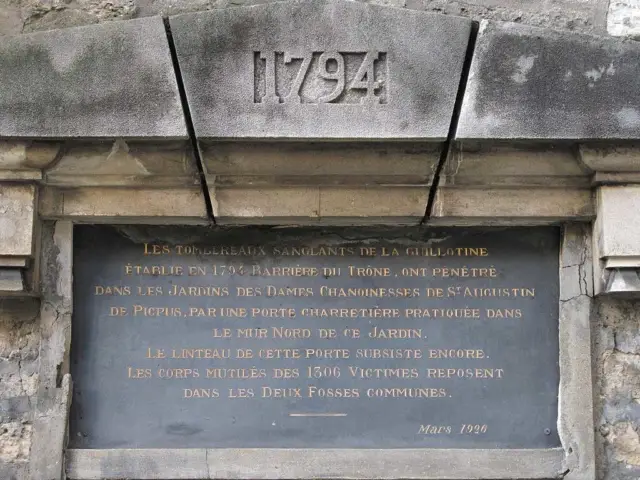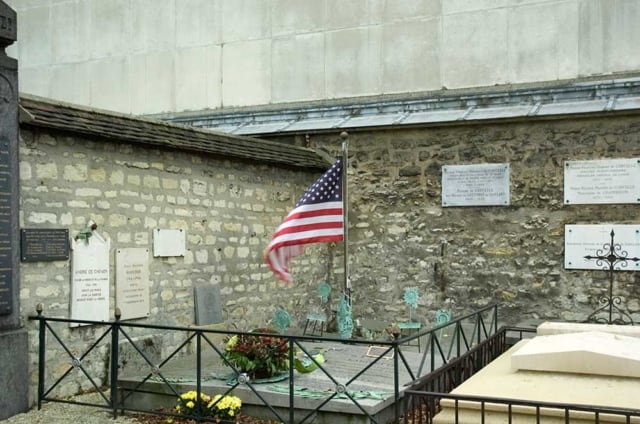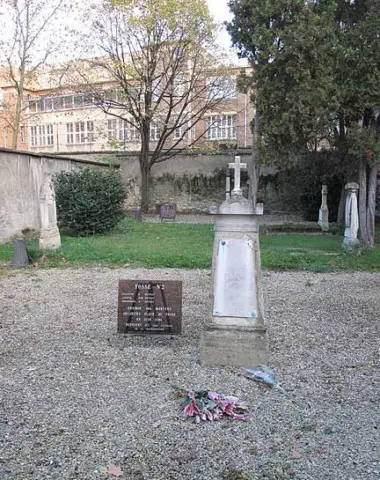About the Reign of Terror:
In order to really appreciate the significance of Picpus Cemetery, you need to know a bit of the background. September 5, 1793 through July 28, 1794 is a period in French history known as The Terror. As a result of the French Revolution, thousands were executed as “enemies of the revolution” under Robespierre who had been named head of the Committee for Public Safety. During the time, known as the Reign of Terror, as many as 55 people per day were executed. This number included many Catholics…. lay people as well as priests and nuns. The final death toll during this period was about 25,000 in summary executions throughout France, in addition to about 16,000 by the guillotine here in Paris.
The guillotine was set up in the Place du Trône Renverse…now called the Place de la Nation. Needing a convenient place to bury the bodies, the Revolutionary Tribunal dumped them in a pit nearby in a mass grave. It was created from land seized from the Augustine Convent here. Later, a second pit was added as more bodies piled up.
About the Martyrs of Compiegne:
One of the last groups to be executed during the terror were the martyrs of Compiegne: members of the Carmel of Compiegne, France who refused to renounce the Faith. They included 11 Discalced Carmelite nuns, three lay sisters, and two externs (those who handled the community’s needs outside the monastery) ranging in age from 29 to 78.
They were imprisoned and then brought to the guillotine together on carts through the city on July 17, 1794, As they went they were heard singing the “Miserere,” “Salve Regina,” and “Laudate Dominum”, a hymn particularly associated with their foundress, Teresa of Ávila.
Reaching their final destination, one by one they renewed their profession of faith and kissed a small statue of the Blessed Virgin Mary as they climbed the steps of the guillotine.
Even those hardened by days of bloodthirsty terror were impressed.
We celebrate the Feast of the Maryrs of Compiegne on July 17.
This spectacle was perhaps the final straw and influenced the public mood in a way that finally helped bring about the end of the terror, when Robespierre himself was guillotined a few days later on July 28 .
“Dialogues of the Carmelites”, an opera written by Francis Poulenc in 1956, commemorates this event.
They were beatified by Pope St. Pius X, on May 27, 1906 as the Martyrs of Compiegne. We celebrate their Feast Day on July 17.
About Picpus Cemetery:
Picpus Cemetery is now the largest private cemetery in the city. It has irregular hours, and many in Paris are not even aware of its existence. There is a gate at the entrance, where the carts were driven through carrying the bodies of those executed, leading to a small chapel. Inside the chapel you will see two plaques with the names, ages, occupations and date of death for each of the 1,306 people interred in the mass graves.
Today, only descendants of those 1,306 victims are eligible to be buried at Picpus Cemetery
Of special interest to those from the U.S. is that it is also the location of the grave of General-Marquis de La Fayette, the French military officer who fought in the Revolutionary War, commanding American troops in several battles, including the Siege of Yorktown. His wish was honored to be buried in both American and French soil….his son covered his coffin with dirt they had taken from Bunker Hill in 1825, when the marquis laid the cornerstone to the monument that still marks the battlefield.
The American flag has always flown beside his grave, and the U.S. Ambassador places a wreath here each July 4. Lafayette’s wife is buried beside him. He is buried here because his own sister and mother-in-law were victims of The Terror and are buried in the mass grave.
Finding Picpus Cemetery:
If you are taking the Metro, there is a Picpus métro stop or you can take the exit at Place de La Nation, and then walk on Rue Fabre d’Eglantine to rue de Picpus. There is a sign outside the door that says: Here, in two mass graves, are buried the bodies of more than 1300 people guillotined on the Place du Trône from June 13 to July 28, 1794.
Generally, hours are between 2:00 pm and 5:00 pm, Tuesday through Sunday. The cost is 2 euros. You might want to call before you go, and you may need to call again once you get there if the doors are not open.
Address: 35 rue de Picpus, 75012 Paris
Tel: +33 1 43 44 18 54
Click here for the official website of Paris Cemeteries.





